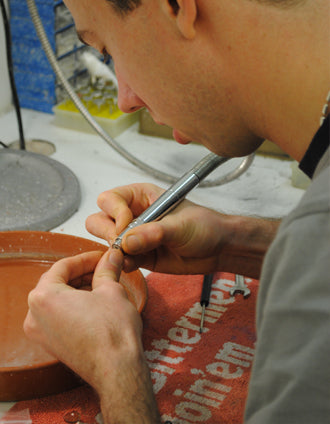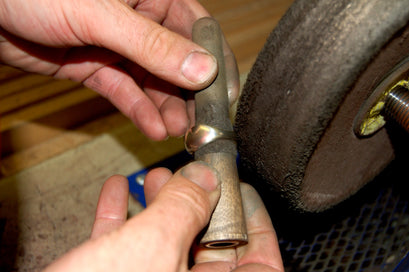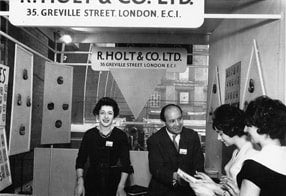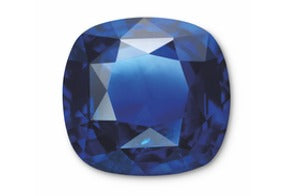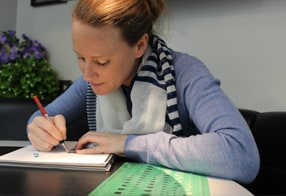Hopefully most of you know that at Holts we don’t just sell and test gemstones. We also have our highly-skilled workshop, where our lapidaries cut, polish, carve and restore gemstones and objets d’art back to their former glory.
77 is the collective number of years between our three qualified lapidaries. This doesn’t include our apprentice, who will qualify in 2020. This amount of experience and expertise is what sets the Holts workshop apart, and why have been tasked with such jobs as restoring parts of the Albert Memorial (which we’ll talk about in a couple of weeks’ time – it’s really cool).
Lapidary is an age-old art form. There are records of Stone Age beads, lapis cabochons of Ancient Egypt, amethyst worn by Ancient Greeks to prevent inebriation (doesn’t work). In these eras the equipment would have been a little more basic, but ‘modern’ lapidary equipment hasn’t actually changed all that much in the last few hundred years.
The term ‘lapidary’ generally does not include diamond cutting. The two skills, whilst similar in principle, are actually very different techniques and require different knowledge. One of our lapidaries uses a spot-on analogy when explaining this to clients: the difference between a lapidary and a diamond cutter is like the difference between a vet and a doctor. A vet can operate on all species of animal, like a lapidary on all types of gemstones and minerals. A doctor understands the anatomy of a human; a diamond cutter focuses specially on diamonds. These skills can translate, if it came down to it a doctor could operate on an animal and vice versa, just like a lapidary could polish a diamond, but it is a different skill set with different equipment and training required.
We will skim the surface of cutting, polishing and carving, so stay tuned to read more about this niche, highly-valuable expertise we are so proud of.
